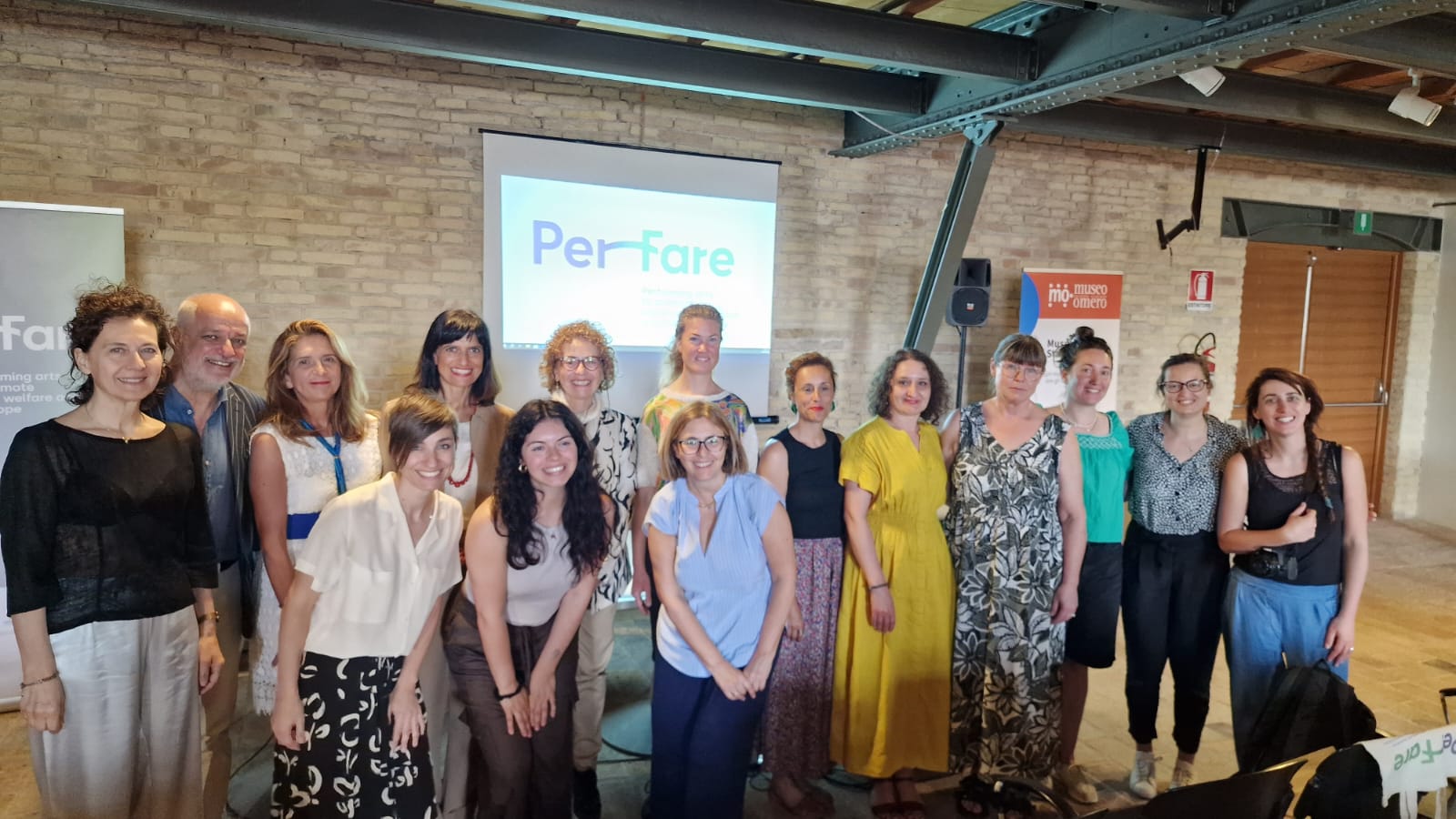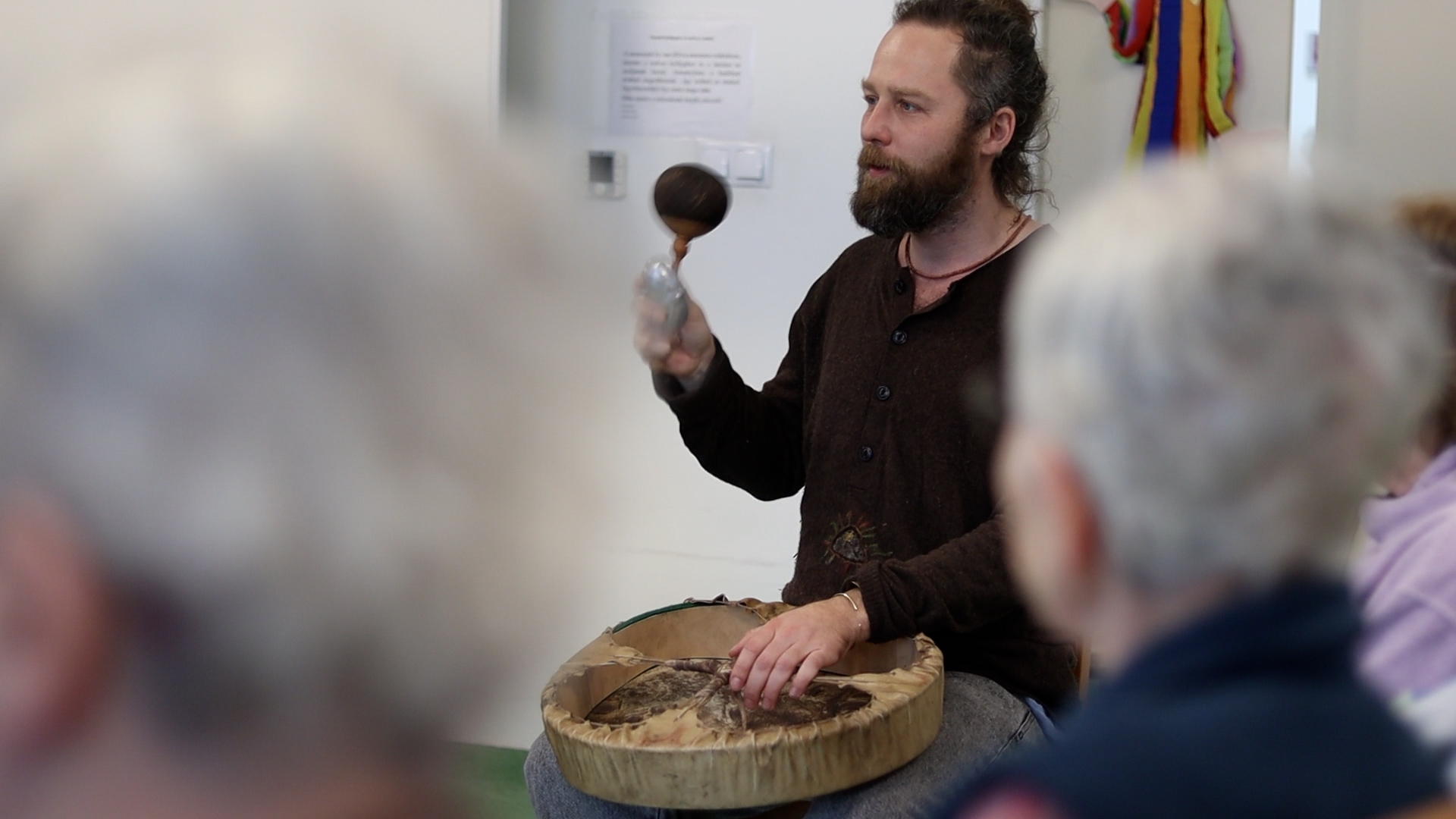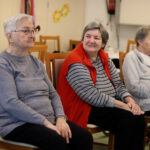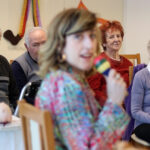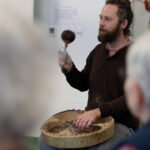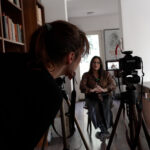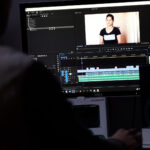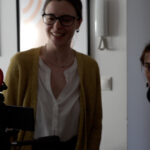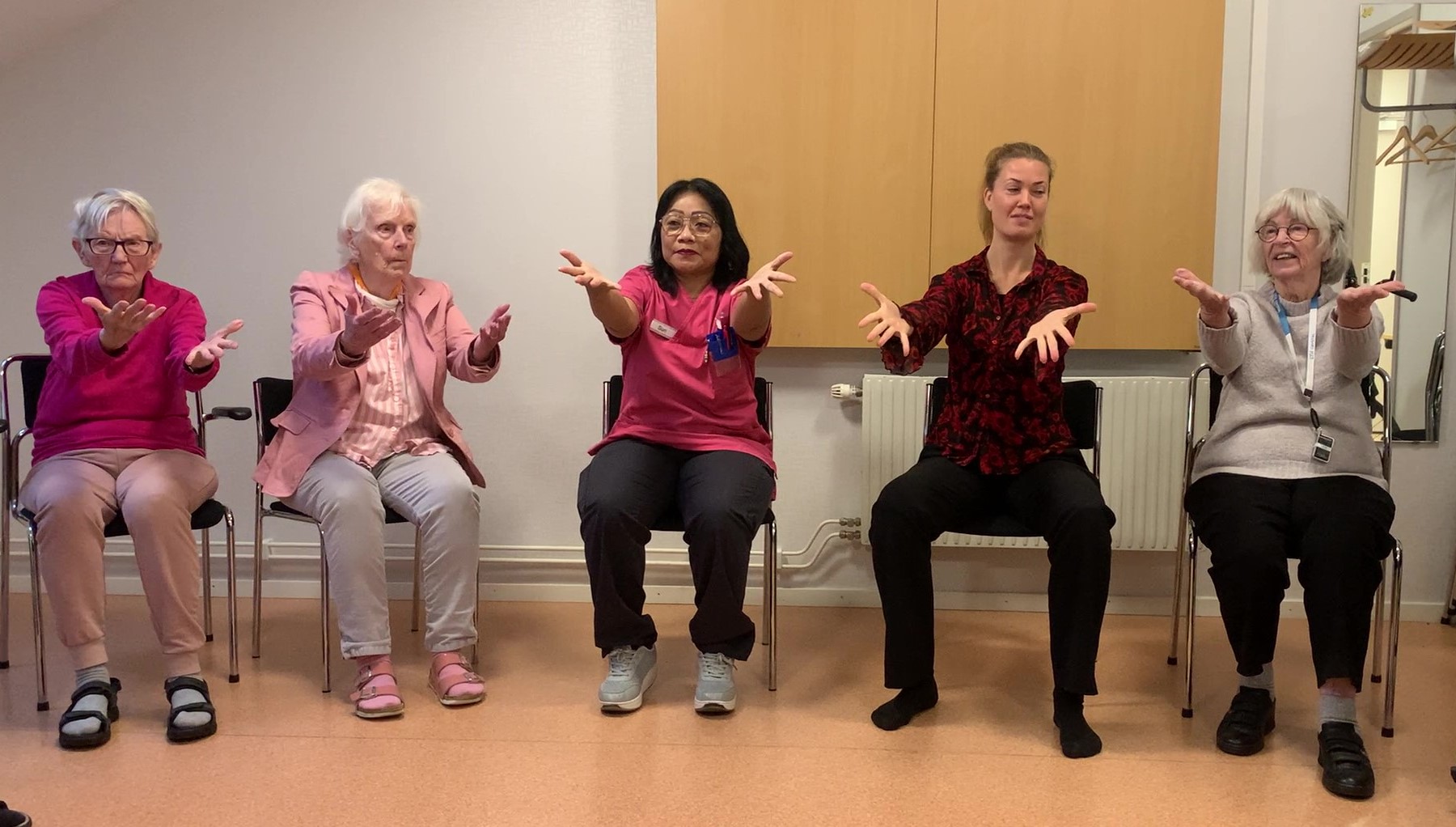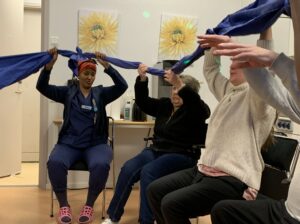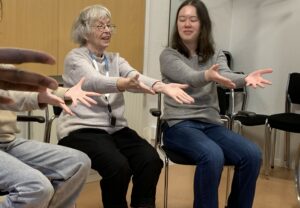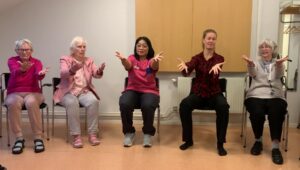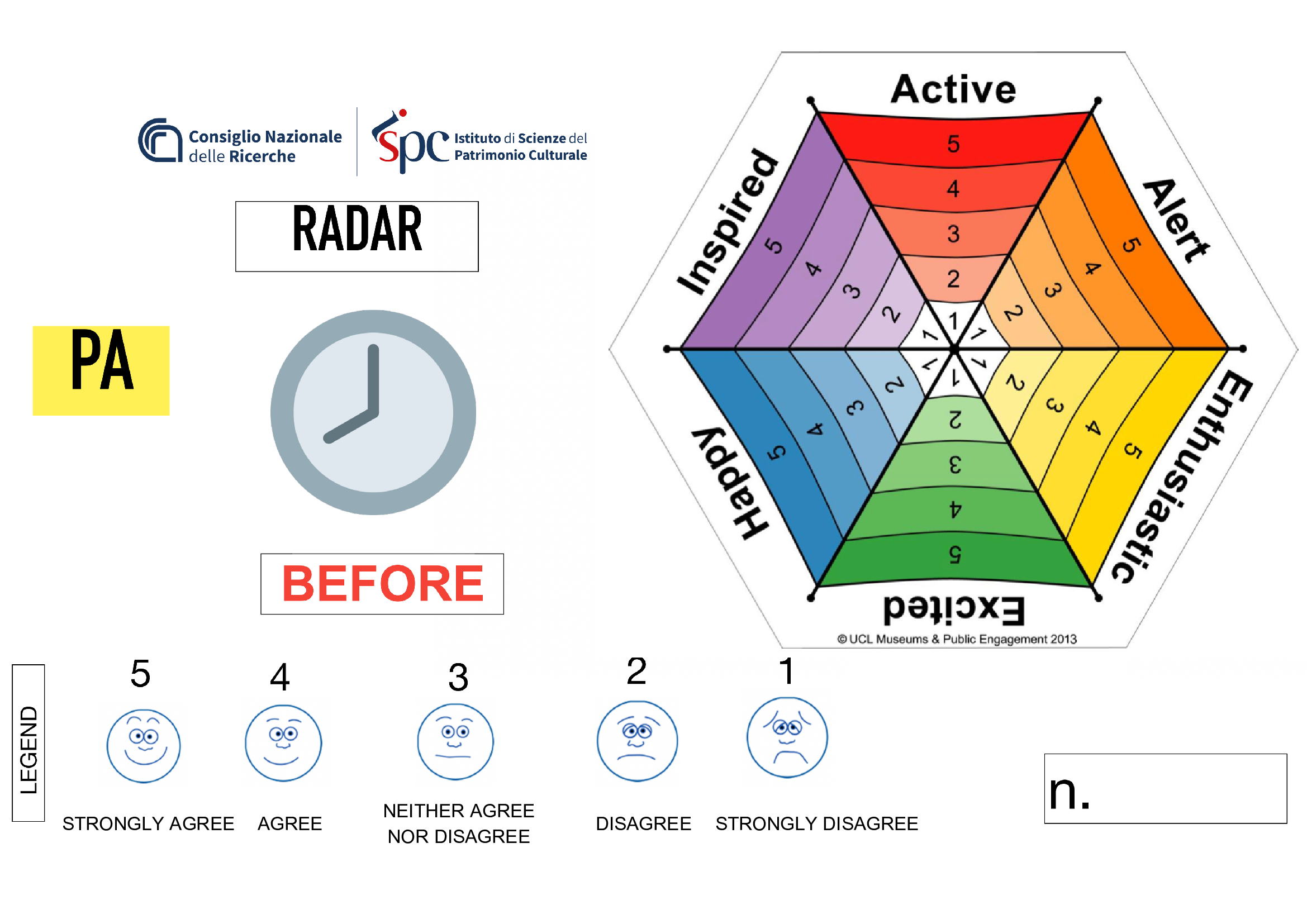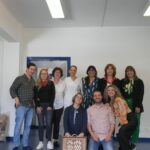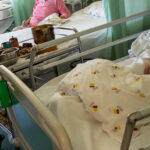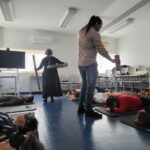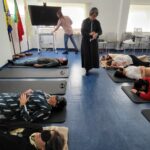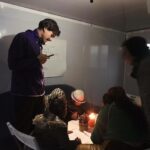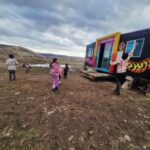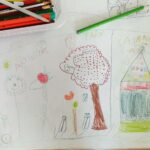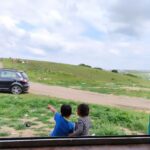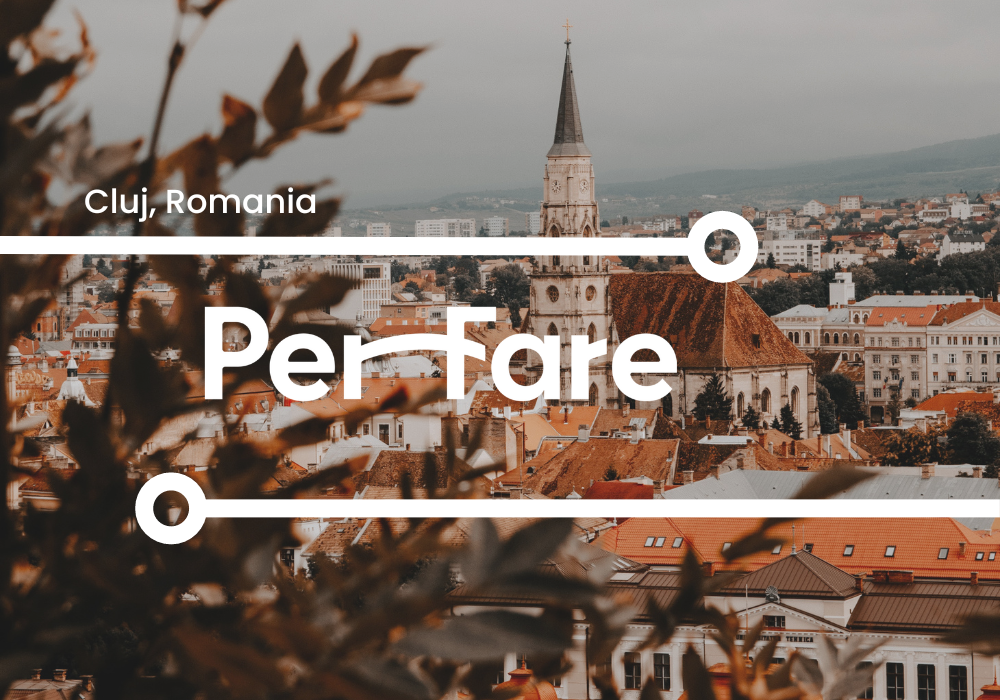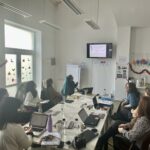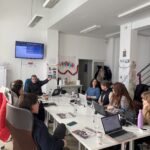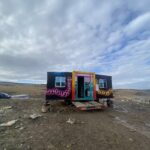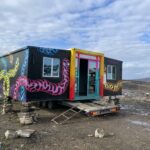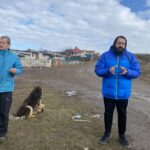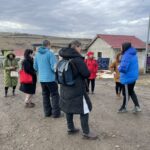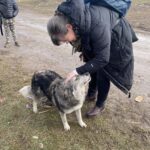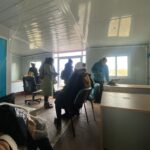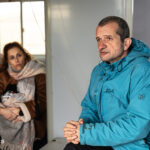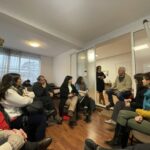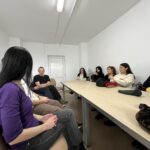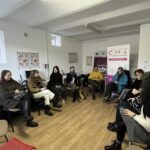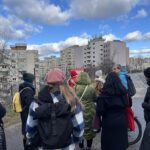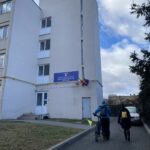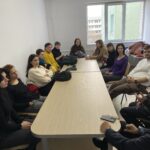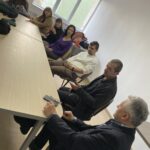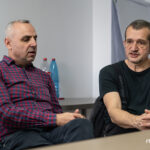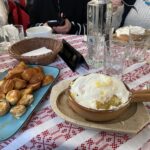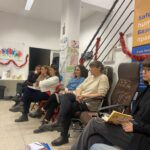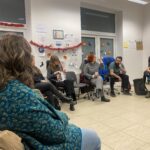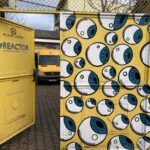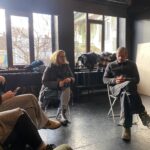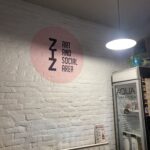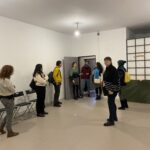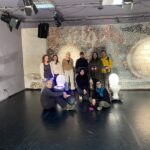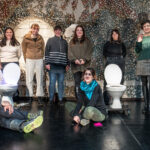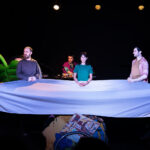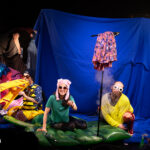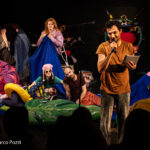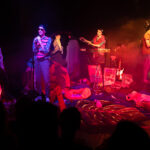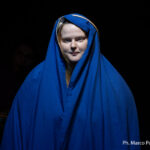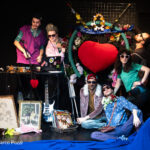Senza categoria
“Megatrends”: Tools and Analysis on Our Future
In an increasingly uncertain global context, a vast archive of opportunities we can seize and challenges we can face with our projects.
European Projects and "Megatrends": For a World in Motion
The world is in motion: international news is enriched daily with events and reports that provide an uncertain – if not decidedly bleak – picture of the world to come and the future of Europe.
European projects are one of the tools we have to respond, in our small way, to these great challenges. Knowing what are perceived as "Europe's great challenges" and staying updated on this debate enriches one's civic awareness and allows for the realization of projects with a broader vision.
Today we're talking about two portals dedicated to the analysis of "Megatrends," which are the "driving forces" that will have a major influence on our future: two large archives rich in food for thought, in-depth analyses, and possible ideas for our projects.
The Sources: The Megatrends Hub and ESPAS's Work
In our review of "Megatrends," we refer to two main sources: the Megatrends Hub portal of Knowledge4Policy and the work of ESPAS (European Strategy and Policy Analysis System).
- Knowledge4Policy is the European Union's platform that provides scientific analysis and tools to support European policies. It is curated by experts and scientists from across Europe and explores a wide variety of thematic areas: from artificial intelligence to behavioral sciences, from biodiversity to migration dynamics, from active citizenship to satellite observation, from frontier technologies to sustainable transition. The pages of Knowledge4Policy are rich in analyses, reports, studies, publications, databases, and tools, dedicated to fueling the debate on future scenarios and how to address them. One of its most well-known tools is the Megatrends Hub, a portal that systematically identifies and explores 14 "Megatrends," 14 major "driving forces" for Europe's future, further breaking them down into more concrete and specific aspects. This portal represents a conceptual reference point on the subject at the European level 1.
- The work of ESPAS has fewer ambitions for systematicity, but it has a more practical approach to informing and supporting European policies. It offers a very wide, dense, and updated range of studies and research on major global trends of interest to the European Union and is the reference point on the matter for the main EU institutions. Its goal is to identify and analyze the key trends and challenges, and the resulting policy choices, that Europe and the entire world will face in the coming decades. On the ESPAS website, you can find in particular short periodic publications ("Horizon Scanning") on major emerging trends, broader annual reports ("Global Trend Reports") and thematic reports ("Foresight Papers"), and a large archive of strategic studies in various sectors ("ORBIS", Open Repository Base on International Strategic Studies). While not specifically addressing "Megatrends" as such, it deeply and thoroughly analyzes the same themes.
"Megatrends": A Message of Complexity and Hope
The general message of "Megatrends" and these strategic analyses is one of both complexity and hope.
On the one hand, they highlight (should it be necessary to remind ourselves) the complexity of contemporary global dynamics, emphasizing how they are closely interconnected. The analysis they propose is very multifaceted and goes beyond the most well-known and frequent slogans or "buzzwords" characteristic of European and national politics, which reflect an increasingly polarized public discourse (this too is a "Megatrend"). While not a "new" concept (their elaboration dates back some years), "Megatrends" bring to light aspects that are increasingly evident in light of recent developments in the international context, first and foremost the importance of strategic and geostrategic aspects (and not just ideal and value-based aspects) in the formulation and implementation of European policies 2.
On the other hand (no less important), "Megatrends" convey a signal of hope. They help both to "identify probable futures" and to act to "support preferable futures." They include many difficult, negative, and problematic dynamics, but also present many positive evolutions and solutions that can be leveraged to build the world of tomorrow.
The 14 "Megatrends"
- TECHNOLOGY AND HYPERCONNECTIVITY
What it is: The growing impact of technology, data, and digital connectivity on our way of life, socialization, work, production, and governance.
What it covers:- Big data, cybersecurity, technological monopolies, and quantum technologies
- Digital twins, home automation, and data regulation;
- Wearable technology, brain-computer interfaces, genetic engineering, biotech;
- Space technologies for climate, satellite connections, asteroids, and space debris;
- Electrification of transport, autonomous driving, and new energy sources.
- NATURAL RESOURCE SCARCITY
What it is: The growing demand for water, food, energy, land, and minerals, making natural resources increasingly scarce and expensive.
What it covers:- Economic and consumption pathways that are “sufficient” and sustainable;
- New forms of pollution, biodiversity loss, and new strategic raw materials;
- New forms of energy, reduction of waste, new deposits, and extraction systems;
- More sustainable lifestyles and eating habits;
- Improved capabilities, data, and indicators for implementing integrated policies.
- CHANGING WORLD OF WORK
What it is: The radical change in the nature of work, employment and career models, and organizational structures, introduced by new generations and the prolongation of working life.
What it covers: - SHIFTING SECURITY PARADIGMS
What it is: The changing ways global actors interact, modifying relationships, power positions, approaches, and consequences of conflicts, with increasing pressure on the environment and society.
What it covers:- Strategic autonomy, resource control, sovereignty, migrations, and militarization;
- Global competition for resources, increasing inequalities, and militarism;
- Adaptation to new weapon systems (drones, AI, unconventional), propaganda, and fake news;
- New technologies, business models, governance, and space autonomy, asteroids, and space debris
- CLIMATE CHANGE AND ENVIRONMENTAL DEGRADATION
What it is: The continuous increase in anthropogenic pollution, greenhouse gas emissions, overexploitation, and environmental degradation, with dramatic consequences for humanity.
What it covers:- Increase in greenhouse gas emissions and global warming;
- Climate-induced disasters, deterioration of air, water, and food resources, migrations;
- Decrease in quality and quantity of air, water, soil, natural habitats, and biodiversity;
- Growing (but insufficient) sensitivity to climate change and circular economy;
- Increasing regulatory attention and grassroots and local individual activism on environmental issues.
- GROWING URBANISATION
What it is: The increasing movement of people from rural to urban areas worldwide, with consequences in terms of sustainability, health, housing, inequalities, relationships, and land management.
What it covers:- Increase in built and “smart” spaces, waste and housing management, development, and inequalities;
- Smart cities, prospects, and risks of using data and digital in urban areas;
- Environmental awareness in cities, mobility, green solutions, and investments;
- Mobilization of local authorities and citizens on common causes, also thanks to technology and data.
- DIVERSIFICATION OF EDUCATION AND TRAINING
What it is: The rapid change in educational needs and delivery methods due to generational changes, hyperconnectivity, technologies, and information availability.
What it covers:- Broader focus (from knowledge to skills), hybrid teaching spaces, and new actors in schools;
- Hybridizations (tangible/virtual, thought/AI, training/life), critical thinking, and media literacy;
- New professions, online and AI-driven teaching, role of local communities and partnerships;
- Impact of rapid global changes on schools, training curricula, and teachers.
- RISING INEQUALITIES
What it is: The increasing gaps between people and territories, of various kinds (income, education, work, health, gender, age, ethnic origin, development, and prospects), despite significant progress made.
What it covers:- Erosion of social, ethnic, and intergenerational cohesion, new forms of loneliness, and polarization;
- Impact of green and digital transition on work and inequalities;
- Territorial factor on climate shocks and inflation, wealth accumulation, and polarization;
- Increasing gaps in the world of work, post-Covid, and collapse of social security systems;
- Social and geographical gaps in access to health and life prospects, mental health;
- Changing gender norms and values, but with persistent gaps.
- INFLUENCE OF THE GLOBAL EAST AND SOUTH
What it is: The shift of economic power from established economies (the West and Japan) towards emerging economies in the East and South.
What it covers:- Growing regionalization and fragmentation (also in technologies and supply chains);
- Multipolarism, trade fragmentation, US-China rivalry, identity narratives;
- Africa's potential: resources, investments, regional integration, geopolitical interests;
- China: dominance in manufacturing, finance, and technology, political soft power, and internal difficulties.
- GROWTH IN CONSUMPTION
What it is: The growth of middle classes, or "consumer classes," worldwide, with an impact on production and business, but also on resources and the environment.
What it covers: - GROWING DEMOGRAPHIC GAPS
What it is: Rapid global population growth (almost 10 billion by 2050) concentrated mainly in sub-Saharan Africa, with aging and population stagnation in developed countries.
What it covers:- Population growth (with disparities), fertility decline, and increased life expectancy;
- Growing differences between demographic pyramids, with increasing migration and demographic decline;
- Similar developments in terms of workforce (with stress in Europe on economy and pensions);
- Effects in Europe: poverty among the elderly, public spending and healthcare under stress, electoral dynamics;
- Effects in Europe: social, economic, territorial, and intergenerational inequalities.
- INFLUENCE OF NEW GOVERNANCE SYSTEMS
What it is: The increasing impact of new actors, state and non-state, and new ways of using media, technologies, and social media, on traditional governance systems.
What it covers:- Disinformation, political marketing, personalization, and polarization of politics;
- Role of AI on bias and decisions, data, biometrics, human rights, and data governance;
- Participatory democracy, civic engagement, and activism, role of digital platforms;
- Anticipatory governance, leadership and skills, open government, and “cyberspace” policy;
- Global decline of democracy and media freedom, rules and protection on digital media.
- GROWTH IN MIGRATION DYNAMICS.
What it is: The growing social and political importance of migration, with complex migratory dynamics involving an increasing number of people (the number of migrants worldwide has doubled in 30 years).
What it covers:- Drivers of migration: job search, “diaspora” networks, wars, internal crises, and climate;
- Public opinion, asylum seekers, attraction of skills and talents, demographic and fiscal dynamics;
- Militarization of borders, instrumentalization by other countries, disinformation, and tensions;
- Management of labor migration, agreements with other countries, effects of climate, and use of data.
- NEW HEALTH CHALLENGES
What it is: Preventing and containing new health challenges (often with “human” causes): lifestyles, mental health, pollution, aging, bacterial resistance, and new viruses, thanks to scientific progress.
What it covers:- Intelligence, data, supply chains, experience, and prevention against epidemics and super-bacteria;
- Impact of aging, chronic and mental illnesses – and scientific progress;
- Data and AI for prevention, diagnostics, and cure development, (micro-)robotics, and wearable devices;
- Impact of climate change, pollution, and environmental degradation on zoonoses and diseases;
- Emerging mental health risks: eco-anxiety, technostress, isolation, post-traumatic stress;
- Science “miracles”: gene therapy, genomic editing, mRNA vaccines, new treatment methods.
ESPAS Resources and 2024 Report
Since it's difficult to summarize ESPAS's work in the space of an article, we offer below a review of the sectors covered by its document archive (ORBIS), the topics covered in its latest periodic updates (Horizon Scanning), and a summary of its Global Trends 2024 report (available in Italian). We find many aspects common to what has already been highlighted by the 14 "Megatrends."
Sectors covered by the ORBIS archive (by number of publications available, in descending order):
Economy, Technology, Governance, Innovation, Security, Globalization, Development, Growth, Foreign Affairs, Defense, Environment, Industry, Climate Change, Politics, Sustainability, Employment, Resources, Demography, Energy, Regions, Education, Poverty, Science, Migration, Research, Food Security, Health, Water, Agriculture, Integration, Transport, Biodiversity, Mobility, Space.
Latest Horizon Scanning releases:
March 2025 (Neurotechnologies, Diplomatic Non-immunity, Climate Manipulation and Conspiracy Theories); November 2024 (Youth Gender Ideological Divide, Deindustrialization, Family Structures); March 2024 (New OPECs for New Mineral Resources, Unknown Parts of the Biosphere, Artificial Moral Agents); November 2023 (De-dollarization, AI-Generated Worlds, Manufacturing in Space); June 2023 (BRICS Expansion as an Alternative to Multilateralism, New Sources of Extreme Inequalities, Radical Food Production Methods); November 2022 (Rising Costs of Geopolitics, Governance of Common Resources, Inactive Citizenship); July 2022 (Chinese Geopolitical Narratives, Radical Transparency, Rights-based Approach on Resources and Environment). In each release, many other topics are also covered, in a more concise form.
Main themes of the Global Trends 2024 report:
- Geopolitics: Geopolitics is shifting from cooperation to competition and conflict, with new threats such as hybrid warfare, disinformation, and the struggle for supremacy in space;
- Economy: Geopolitical fragmentation and the transition towards climate neutrality threaten economic growth, influenced by US-China rivalry and new regional blocs;
- Demography: The European population will decrease, not offset by migration flows, putting pressure on the labor market and fiscal sustainability; China's demographic decline will have global repercussions;
- Environment and climate: Climate change is accelerating, likely surpassing the 1.5-2 °C target of the Paris Agreement, severely affecting the EU, which must consider the international context for its climate strategy;
- Energy: Global energy consumption is increasing, with the use of fossil fuels and renewable sources; the green transition is hampered by investments in fossil infrastructure and the availability of critical minerals;
- Inequalities: Economic inequalities and access to education, technology, healthcare, and climate justice are increasing, with social tensions fueling political polarization and potentially weakening democracy;
- Technology: The spread of new technologies and their convergence is increasing, in a context of rising expectations and geopolitical rivalry, with regulatory difficulties;
- Healthcare: The COVID-19 pandemic highlighted the need for a well-equipped healthcare sector, which will continue to drive scientific and technological innovation, addressing challenges such as antimicrobial resistance;
- Lifestyles: People are increasingly living in cities, exposed to climate change; technologies are changing work and learning, creating opportunities and risks, with diversified impacts on EU regions and economic sectors;
- Democracy: Democracies are attacked to compromise their freedoms, with attempts to prejudice elections and freedom of expression; participatory democracy and high involvement on specific issues are positive trends.
Notes:
<a name="note1">[1]</a> Many of the dynamics highlighted by the "Megatrends" overlap with those that the 17 Sustainable Development Goals aim to address. "Megatrends" and Sustainable Development Goals are different conceptual frameworks, with different origins and objectives, resulting from different reflections, organizations, and contexts, although to some extent complementary. ⇑
<a name="note2">[2]</a> These aspects, as well as the dynamics highlighted by the "Megatrends," can be considered in the elaboration of European projects and demonstrate awareness and interest in the challenges that European institutions are called upon to face. However, with all due weight and caution: 1) what is reported in these portals does not necessarily represent the position of the EU institutions, which emerges directly from official documents, policies and strategies; 2) not all information reported in the portals is necessarily updated to the latest (extremely rapid) developments in the contemporary world. ⇑
Source: https://www.guidaeuroprogettazione.eu/megatrend-analisi-sul-futuro/?utm_source=newsletter&utm_medium=email&utm_campaign=aprile_25
Ending things right: final event in Ancona
On 13th June 2025, partners met one last time - in the framework of the PerFare project - in Ancona, Italy.
On this day, they had the chance to gather together and discuss the learning points of this 36 months of work, to exchange their experience to the local public and to mingle with other cultural and health professionals, traveling from all partner countries.
The programme was the following:
📍Museo Omero (Banchina Giovanni da Chio, 28, Ancona)
10.00 - 11.15
6th Steering Committee Monitoring Meeting
11.30 - 12.30
Press conference with Italian press
13.00 - 15.00
Lunch together
16.00 - 18.30
FINAL EVENT
● PerFare’s journey - from the beginning to here
● Pilot actions: a presentation on the Culture&Wellbeing activities born from PerFare
● A word with other local cultural welfare projects
📍The Mole - Caffè Letterario (Banchina Giovanni da Chio, 28, Ancona)
18.30
Aperitivo
Pilot actions: a presentation on the Culture&Wellbeing activities born from PerFare
Each partner presented the pilot actions implemented in their respective territory.
Here below, a short description, along with the link to the presentation, is provided for each of the 8 pilot actions born from the project:
Italy
Macerata
Tutti i colori del giorno - All the colors of the day
Created by Rovine Circolari (Isabella Carloni)
For the Association Piombini Sensini
Tutti i colori del giorno - All the colors of the day is a theater project that intends to put the languages and skills of the performing arts at the service of situations of social hardship, with the aim of enhancing oneself and the relationship with others, with a targeted proposal for the Piombini Sensini Community of Macerata in the various age groups of the people hosted. The project - by Rovine Circolari - is freely inspired by the story of a group of children of different nationalities and cultures who grow up in the peripheral area of a large city in contact with a varied and unpredictable human fauna, full of love but also forced to struggle to overcome the difficulties of everyday life. The relationship that is established between one of them and the children’s guardian will reveal a deep attachment that overcomes cultural differences. The intent of the project is to involve all participants - from children to adults depending on their possibilities - through the languages of performance, to outline a short collective performance.
Ancona
Danza col cuore - Dance with the heart
Created by Gruppo Danza Oggi (Patrizia Salvatori)
For the Association Un Battito di Ali - operating inside the Department of Cardiac Surgery and Pediatric and Congenital Cardiology at "Torrette" Hospital in Ancona
The "Danza col cuore" project, from a socio-cultural point of view, adopted an immersive approach that includes the presence of a dancer and the project coordinator. The intervention took place directly in contact with the patients of the Torrette Hospital in Ancona through immersive emotional incursions, designed to create a deep interaction without interfering with any emergency situations in the department. The dancer's body became an expressive medium, offering patients the opportunity to mirror themselves in the movements and to explore new forms of non-verbal communication.
Sweden
Malmö
Stories from the bodily archive
Created by Skånes Dansteater
For the Elder Care Home in Malmö
Stories from the bodily archive is a project for elders with dementia in a care home in Malmö, Sweden. During the fall we have met once a week for 1,5 hours, including coffee break. The aim of the sessions is to enhance movement, joy and connection. With different somatic practices like mirroring, images, props and circle dance we strive for opening each and everyone’s own movement archive. To acknowledge and mirror spontaneous movements has been our focus. Specifically working with social engagement in dance has increased the capacity for keeping up energy and finding new movement patterns. We also worked with body memory of rhythms and dance movement from earlier stages in life. We see potential when the body bring back memories of movement capacity of a younger self. Reconnections can be made which has a ripple effect in the everyday life for the elders.
Portugal
Lisbon
VIA – Vivência Integral Artística
Created by Amalgama Companhia de Dança
For informal caregivers of the Municipality of Lisbon (Associação Alzheimer Portugal, Dona Ajuda facilities and CSP Arroios facilities)
VIA – Vivência Integral Artística is a project aimed at informal caregivers of the Municipality of Lisbon, based on the concept of “Being Body" and dance as a movement of totality, creative and regenerative, integrating body, emotions and mind. The project focuses on the application of artistic practices for well-being, based on the application of a holistic and systemic dance methodology.
The project had two different activities:
- Weekly meetings, Mondays - 06/Jan to 28/Apr – in Associação Alzheimer Portugal and Dona Ajuda facilities, a more artistic approach on Dance and Movement for 1 hour
- Every 15 days, Saturdays – 11/Jan to 10/May – in CSP Arroios facilities, training meeting, in modules that offer theoretical and practical material, session plans and all the necessary tools to guide future application of the methods, providing follow-up and continuity to the project for 6 hours.
Pombal
Aqui Contigo - The Sound as Last Lap
Created by SAMP - Sociedade Artística Musical dos Pousos
For the Pombal District Hospital
The Aqui Contigo project is a program dedicated to people at the end of their life, their families and their caregivers. In a society that often abandons and forgets those who are dying, it is necessary to create contexts that enrich this precious and unique experience for the person and for their circle of closest relationships. The Arts, as observed throughout human history, can play a vital role in this, as the short history of this SAMP project shows. After years of experience, SAMP decided to present this type of project for the Municipality of Pombal, care partner of the partner PerFare Artemrede.The Music Therapist aims, together with family members and caregivers, to facilitate family support in the painful process and to help them in the mourning process. During the last moments of life, in their homes or in facilities (hospitals, nursing homes or palliative care centers), two music professionals work together with families to tell the sound story of each person in the terminal phase. This is done through the creation of a personal work that transforms an intimate and solitary moment into a moment of unity and communion, alleviating suffering in the last moments of life and helping the person to free themselves spiritually.
Romania
Cluj-Napoca
Critical thinking & citizen’s education for children and teenagers
Created by Social Fiber Association
For the Roma community in Pata Rât (Cluj-Napoca)
From the success of Social Fiber Association‘s program “Critical thinking & citizen’s education for teenagers” living in Pata Rât, the association has come to the conclusion that younger children would also have a desire to participate in such activities. Thus, after they started the weekly activities last year in September, they soon realised that a new programme for a younger audience was needed. This led to the new initiative designed for children, aged between 3-11, with weekly workshops in animation, music and philosophy.
Within Social Fibers, there are volunteers and social professionals that constantly work together to promote long-term activities for children coming from vulnerable groups.
LINK TO PRESENTATION - CLUJ-NAPOCA
Hungary
Budapest
I Brought a Baby into this World
Created by Szilvia Papp
For Hungarian and Roma women who experienced harassment and violence during child delivery in hospital
Szilvia "Vivi" Papp is a socially engaged multimedia artist and participatory art researcher. In her experimental work, she tries to question and loosen
established identity patterns and stereotypes. As part of the Perfare project, "I Brought a Baby into This World” is a participatory and site-specific art experiment that reflects on a social issue, aiming to present and loosen taboos that surround our obstetric system, socially imposed maternal models and motherhood, working especially with ROM women, the main victims of systemic patriarchal prejudices and models.
Budapest
Dal a szívnek
Created by Veronika Szabó
For the Vazsonyi Vilmos Vazsonyi elderly home
The project Dal a szívnek is a series of workshops in which the artists sing and make music together with the guests of the Vazsonyi Vilmos Vazsonyi elderly home on Baross Street, evoking the ritual and atmosphere of singing around the fire in a community space. They sing the songs that the elderly know well, like folk songs, festive songs, military songs, chansons, serenades. “Songs unite us all, open us to the past and become collective in the present, regardless of age or state of mind. Songs evoke memories and feelings that we share and relive, sharing their state of mind”.
The choir performed the songs in a closing dance for the other guests, relatives and a small audience, followed by a dance in costume.
The meetings were held in collaboration with the musician Andris Cseh, who has been volunteering for many years to sing with the elderly.
LINK TO PRESENTATION - BUDAPEST
A word with other local cultural welfare projects
In order to spark local connections and to foster new knowledge on similar projects, PerFare invited two EU-funded initiatives that promote Culture&Care activities: ImproLANDS and ThisPlaced.
CHECK OUT IMPROLANDS' PRESENTATION
CHECK OUT THISPLACED's PRESENTATION
Future plans
During this last event, partners agreed on keeping working together. First of all, they are all working very hard on trying to systemize the pilot actions in their local territories. But there is room for a future EU-funded project as well, a follow-up planning that treasures the best practices born from PerFare.
Keep following us on Facebook, Instagram and Vimeo to find out more!
Subscribe to our newsletter to receive the last issue on PERFARE and its journey directly on your emails.
"A song for the heart" and "I brought a baby into this world": the two Budapest-based Culture&Care practices by PerFare
Veronika Szabó, a Budapest-based freelance actor, director, clown, and applied theatre professional, implemented the "Dal a szívnek" (ENG: A song for the heart) project at the Vàzsonyi Vilmos Home for the Elderly. This series of workshops involved communal singing and music sessions that recreated the ambiance of singing around a fire, engaging elderly residents with a variety of well-known songs from different genres. The project culminated in a choir performance and a costumed dance attended by residents, their families, and a small audience, fostering a sense of community and collective memory.
Szilvia Vivi Papp, a media artist and researcher, conducted the "I brought a baby into this world" project as part of the Perfare initiative. This participatory, site-specific art experiment focused on societal norms and taboos surrounding motherhood and the obstetric system. Through collaborative video productions that featured personal narratives and experiences related to motherhood, the project enabled participants to engage with and influence the societal discourse on these topics. These videos, presented in an interview format, served as both performative and informative tools, accessible to a wider audience on the project's YouTube channel.
These projects exemplify the artists' commitment to using their craft to engage with and reflect on social issues, enhancing community well-being and sparking dialogue in distinct but complementary.
Keep following us on Facebook, Instagram and Vimeo.
Subscribe to our newsletter to receive all the updates on PERFARE and its journey directly on your emails.
News from Portugal: PerFare influences the wellbeing of social and health workers too
The project Aqui contigo – Sound as Last Lap by SAMP, taking place in Pombal (Portugal) has gathered some very interesting feedback. The pilot action impacts not only the direct beneficiaries of the artistic intervention, in this case being the patients of the Pombal District Hospital, but also the health and social professionals taking care of them and, in general, the whole hospital atmosphere.
As a matter of fact, the positive outcome is clearly visible after the first months: people in chronic conditions are able to relieve somatic pain thanks to music, while professionals are stating that the project helped to soften the constant daily pressure and favored a sense of well-being in the work environment.
Here is a statement from Alexandra Teixeira, Specialist Nurse and member of the Humanization Committee:
The project Aqui Contigo (Here With You), developed by SAMP at Pombal District Hospital, represents a transformative encounter between music and healthcare. This initiative transcended the conventional hospital environment and created a space for humanisation, welcome and connection through musical art.
We believe that the impact on the patients was profound and heart-warming. Music proved to be a powerful vehicle for emotional relief, easing tensions and anxieties associated with the hospital environment. Many described feelings of calm, comfort and even joy, even during challenging times such as hospitalisation. Music helped transform hospital rooms into spaces of serenity, where emotions could be experienced more lightly and less seriously.
For the professionals, the music helped to soften the constant daily pressure and favoured a sense of well-being in the work environment. In addition, we believe that it brought the professionals closer to the human dimension of the patients and strengthened the bond, promoting greater empathy and sensitivity in care.
Being able to take part in this project has contributed to a deeper understanding of the direct impact of music in hospital environments. We realised how sounds and musical harmony can create bridge between art and medicine, promoting a holistic approach to care.
Being able to take part in this project has contributed to a deeper understanding of the direct impact of music in hospital environments. We realised how sounds and musical harmony can create bridges between art and medicine, promoting a holistic approach to care.
One of the main challenges was to somehow change mentalities. Adapting the presence of music to an environment as sensitive and dynamic as a hospital can seem like a difficult task, and it’s necessary to balance the intensity of the musical interventions with the patients’ routines and rest. This was overcome after the first week of the project. The professionalism and sensitivity of the SAMP musicians clearly contributed to its acceptance.
The adaptation of repertoires to the hospital context combined with the empathy and emotion in each intervention made Aqui Contigo (Here With You) the highlight and most eagerly awaited moment of the week.
For the future, we hope that Aqui Contigo (Here With You) can expand its reach, both in terms of the number of beneficiaries and the area it covers. We believe in an even greater partnership between music and therapeutic practices, with the development of protocols that value art as an integral part of holistic healthcare, inspiring other institutions to embrace this initiative as an essential tool for humanisation.
Finally, we hope that Aqui Contigo (Here With You) continues to touch lives, chanting hope and well-being wherever music finds a heart that needs to hear it.
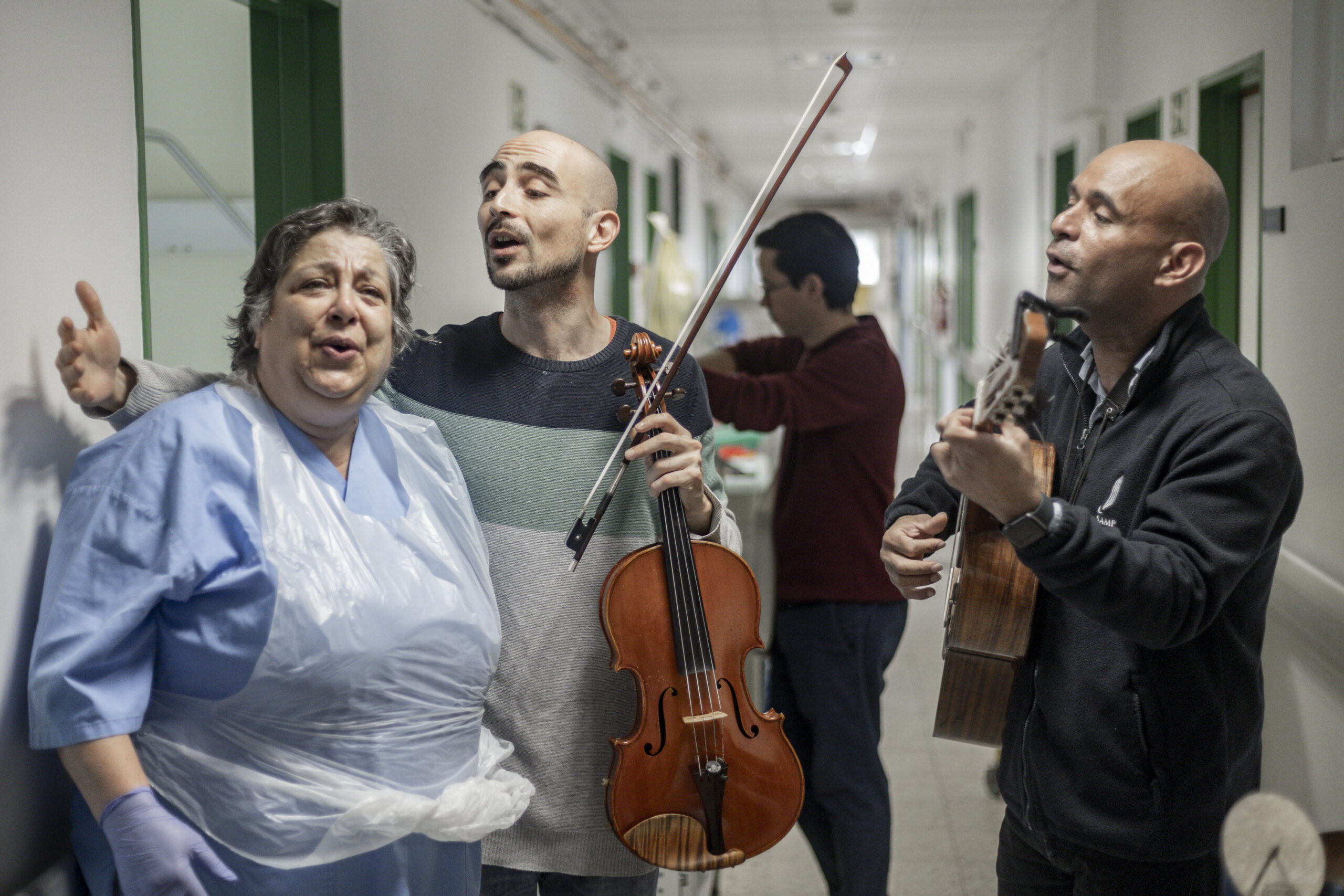
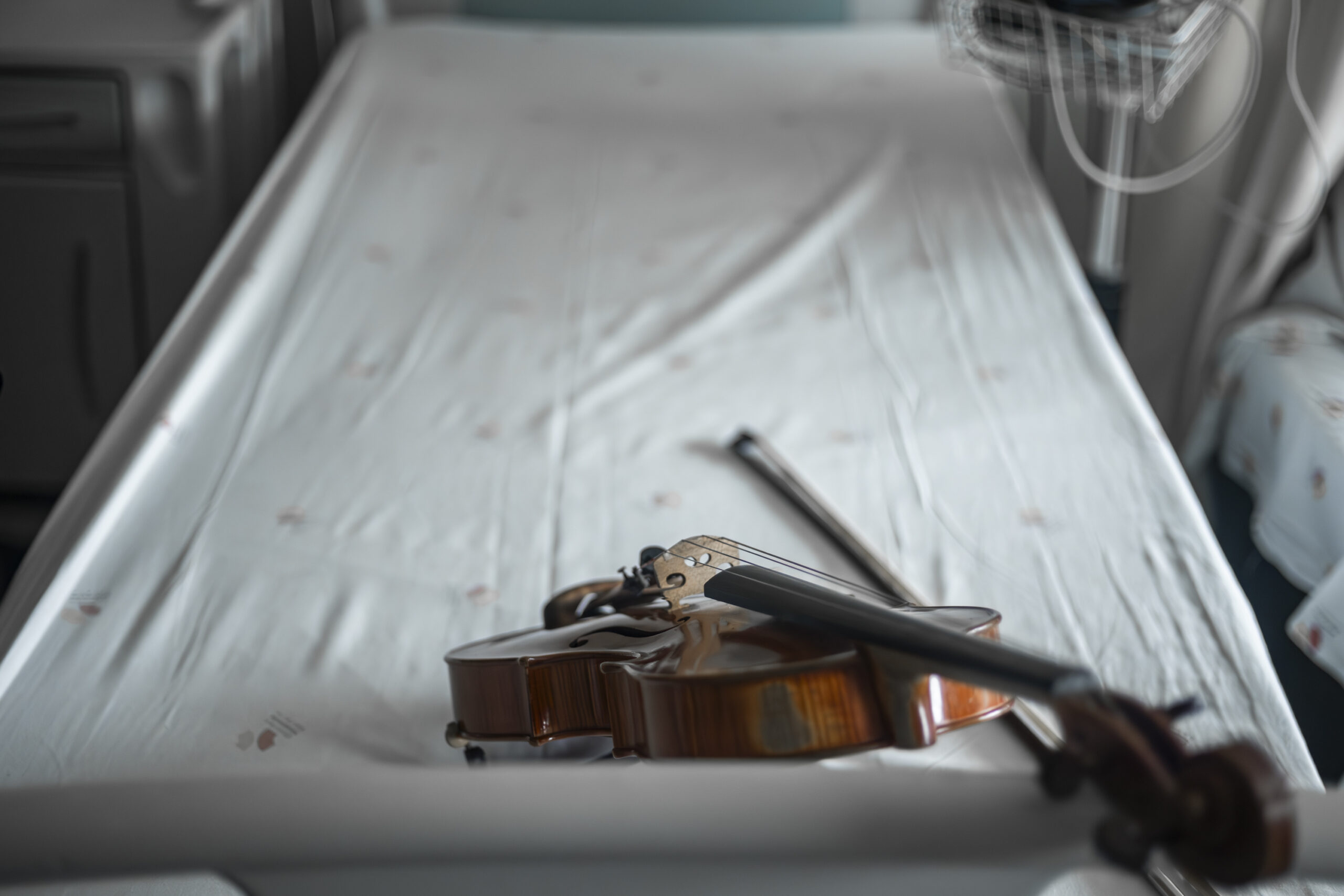
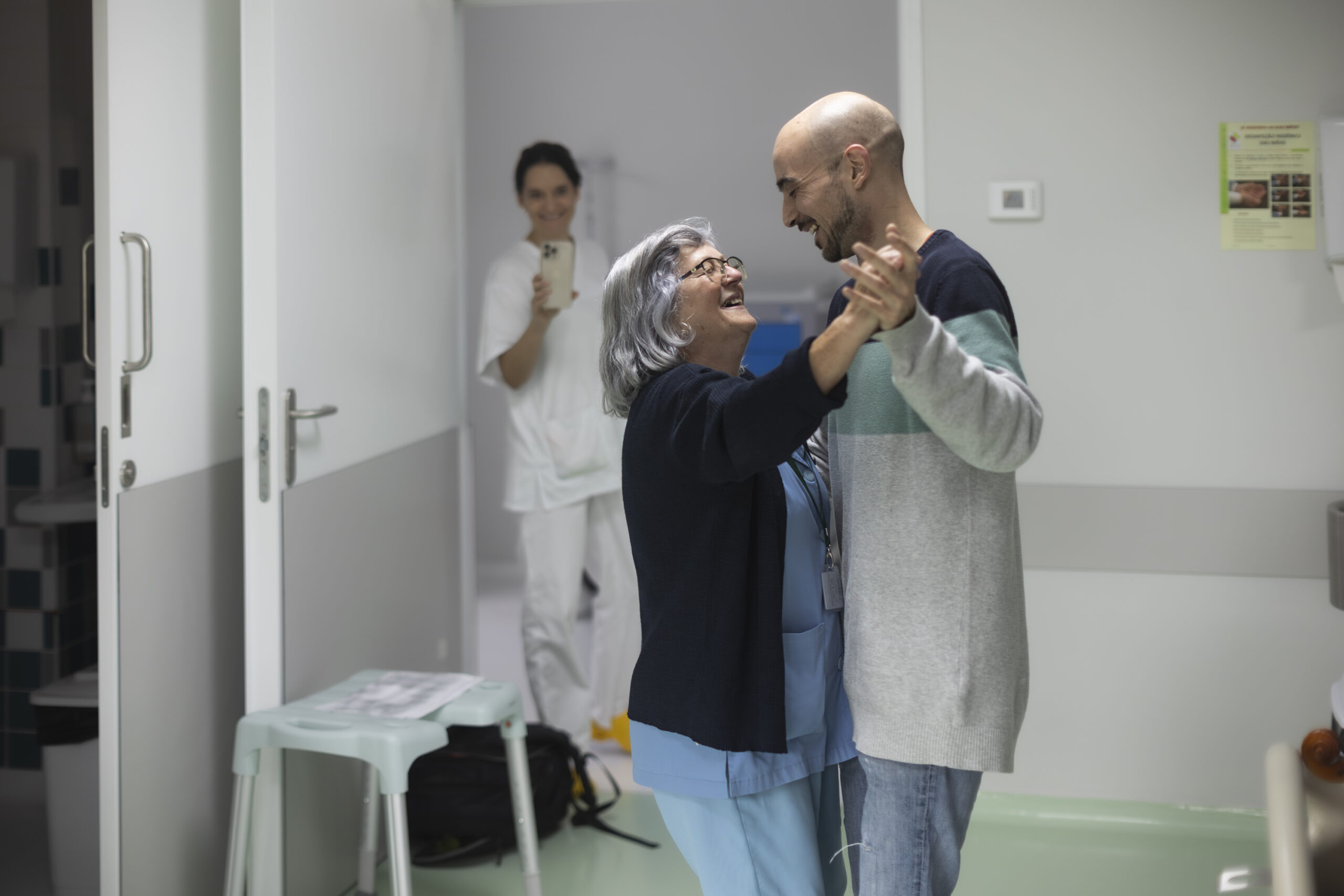
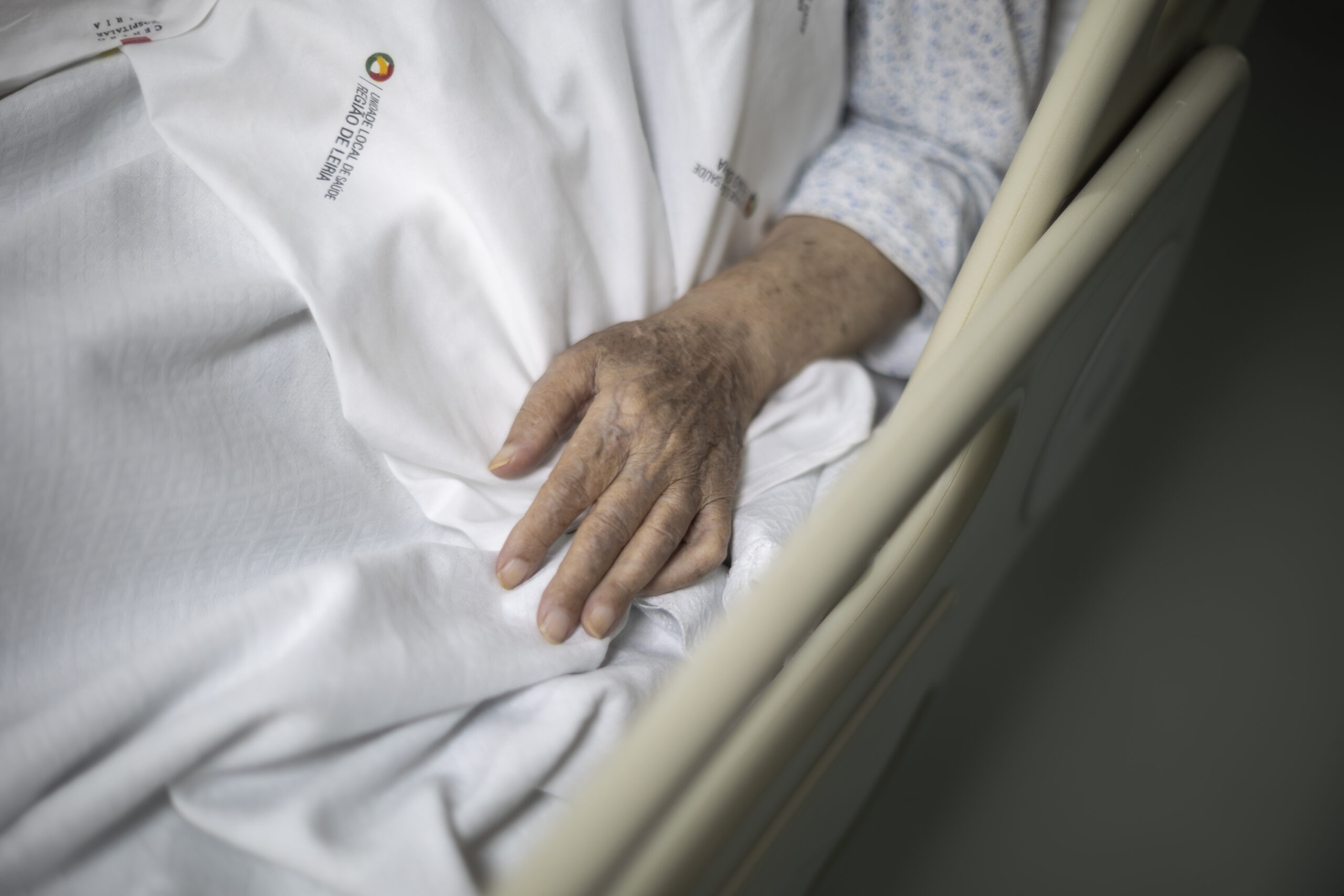
Keep following us on Facebook, Instagram and Vimeo.
Subscribe to our newsletter to receive all the updates on PERFARE and its journey directly on your emails.
PILOT ACTIONS: Culture&Health Projects from Malmö and Macerata
PerFare's pilot actions are starting to roll now: some have been going on for weeks already and some others are just starting, but in every PerFare country there is a little seed planted.
Two new projects have joined the curriculum: Stories from the bodily archive, taking place in Malmö (Sweden), and All the colors of the day, carried out in Macerata (Italy). Let's have a look.
Stories from the bodily archive - Malmö
Stories from the bodily archive is a project for elders with dementia in a care home in Malmö, Sweden, curated by Plattform för Improvisation och Somatik.
The aim of the sessions is to enhance movement, joy and connection. With different somatic practices like mirroring, images, props and circle dance we strive for opening each and everyone’s own movement archive. To acknowledge and mirror spontaneous movements has been our focus. Specifically working with social engagement in dance has increased the capacity for keeping up energy and finding new movement patterns.
The project also worked with body memory of rhythms and dance movement from earlier stages in life. The potential behind a body bringing back memories of movement capacity of a younger self is incredible. Reconnections can be made which has a ripple effect in the everyday life for the elders.
Frames from the project "Stories from the bodily archive" in a state care home in Malmö, Sweden.
All the colors of the day - Macerata
This project intends to put the languages and skills of the performing arts at the service of situations of social hardship, with the aim of enhancing oneself and the relationship with others, with a targeted proposal for the Piombini-Sensini Community in Macerata.
The artistic intervention - created by the cultural association Rovine Circolari - is freely inspired by the story of a group of children of different nationalities and cultures who grow up in the peripheral area of a large city, in contact with a varied and unpredictable human fauna, full of love but also forced to struggle to overcome the difficulties of everyday life. The relationship that is established between one of them and the children's guardian will reveal a deep attachment that overcomes cultural differences.
Specifically, the intent of the project is to involve all participants - from children to adults, with difficult social and family backgrounds - through the languages of performance, to outline a short collective performance. The objective is not so much the perfection of the scenic result (although the experimentation of performative languages could also prove to be an interesting area of discovery and professional knowledge), but rather the bringing into play of one's own creativity, starting from a story, and the sharing of the creative process in all its phases, to arrive at the construction of a collective story, to be offered as a restitution of the path followed.
In fact, central to this path is the creation of groups for practical-performative work, which brings into play the bodies and voices, the use of space, the creative expression and imagination of the participants under the guidance of the artistic operators.
Listening training, creative play, awareness of one's own body and voice, the ability to build and inhabit a performative montage that tells a story, in narrative but also physical and visual form, constitute tools for enhancing self, communicative comfort and psycho-physical well-being.
News from Portugal: PerFare influences the wellbeing of social and health workers too
The project Aqui contigo - Sound as Last Lap by SAMP, taking place in Pombal (Portugal) has gathered some very interesting feedback. The pilot action impacts not only the direct beneficiaries of the artistic intervention, in this case being the patients of the Pombal District Hospital, but also the health and social professionals taking care of them and, in general, the whole hospital atmosphere.
As a matter of fact, the positive outcome is clearly visible after the first months: people in chronic conditions are able to relieve somatic pain thanks to music, while professionals are stating that the project helped to soften the constant daily pressure and favored a sense of well-being in the work environment.
Here is a statement from Alexandra Teixeira, Specialist Nurse and member of the Humanization Committee:
The project Aqui Contigo (Here With You), developed by SAMP at Pombal District Hospital, represents a transformative encounter between music and healthcare. This initiative transcended the conventional hospital environment and created a space for humanisation, welcome and connection through musical art.
We believe that the impact on the patients was profound and heart-warming. Music proved to be a powerful vehicle for emotional relief, easing tensions and anxieties associated with the hospital environment. Many described feelings of calm, comfort and even joy, even during challenging times such as hospitalisation. Music helped transform hospital rooms into spaces of serenity, where emotions could be experienced more lightly and less seriously.
For the professionals, the music helped to soften the constant daily pressure and favoured a sense of well-being in the work environment. In addition, we believe that it brought the professionals closer to the human dimension of the patients and strengthened the bond, promoting greater empathy and sensitivity in care.
Being able to take part in this project has contributed to a deeper understanding of the direct impact of music in hospital environments. We realised how sounds and musical harmony can create bridge between art and medicine, promoting a holistic approach to care.
Being able to take part in this project has contributed to a deeper understanding of the direct impact of music in hospital environments. We realised how sounds and musical harmony can create bridges between art and medicine, promoting a holistic approach to care.
One of the main challenges was to somehow change mentalities. Adapting the presence of music to an environment as sensitive and dynamic as a hospital can seem like a difficult task, and it's necessary to balance the intensity of the musical interventions with the patients' routines and rest. This was overcome after the first week of the project. The professionalism and sensitivity of the SAMP musicians clearly contributed to its acceptance.
The adaptation of repertoires to the hospital context combined with the empathy and emotion in each intervention made Aqui Contigo (Here With You) the highlight and most eagerly awaited moment of the week.
For the future, we hope that Aqui Contigo (Here With You) can expand its reach, both in terms of the number of beneficiaries and the area it covers. We believe in an even greater partnership between music and therapeutic practices, with the development of protocols that value art as an integral part of holistic healthcare, inspiring other institutions to embrace this initiative as an essential tool for humanisation.
Finally, we hope that Aqui Contigo (Here With You) continues to touch lives, chanting hope and well-being wherever music finds a heart that needs to hear it.




Keep following us on Facebook, Instagram and Vimeo.
Subscribe to our newsletter to receive all the updates on PERFARE and its journey directly on your emails.
RADAR TOOLKIT: a Glimpse into our chosen Evaluation Method for the Culture&Health Pilot Actions
PERFARE has chosen to investigate and make use of existing methods for measuring and evaluating culture's societal effect on culture and health by seeing opportunities in systems and methods that were already developed and implemented.
After some research, the RADAR Toolkit was chosen as the best fitting to the project case, easily applicable for the welfare stakeholders who joined PerFare at the very beginning and for the artists selected via call.
In fact, RADAR consist in immediately applicable tools for the measurement of the impact of art&culture on the user, both before and after the experience. It was created as part of the Inclusive Arts and Culture (ICA) project of the Institute of Cultural Heritage Sciences of the National Research Council (ISPC CNR) through a co-design process with users and communities, cultural professionals, caregivers, doctors and geriatricians, occupational therapists, psychiatrists, educators and psychologists.
The RADAR toolkit includes a set of accessible tools to measure the impact of participation in cultural and creative activities on well-being and connection with art and cultural heritage. This tool was developed to be used both in cultural and creative contexts (museums and galleries, archives, libraries, theaters and festivals) and in places of education, assistance and care (day and residential centres, hospitals), to support culture and creativity in a cultural welfare perspective.
Methodology
The measurement tools included in the toolkit were defined starting from experiments with good practices spread internationally, in particular from the umbrellas of evaluating emotional well-being included in the University College of London Museum Wellbeing Measures Toolkit (Thompson &
Chatterjee, 2013; Thompson et al., 2011; 2012a;b) and Inclusion of Nature in Self Scale (Schultz, 2002; Mayer & Frantz, 2004), adapted to evaluate the sense of connection with art and cultural heritage.
There are currently four versions of the Wellbeing Measures Umbrella available to use comprising the:
- ‘Positive Wellbeing Umbrella – Generic’;
- ‘Negative Wellbeing Umbrella – Generic’;
- ‘Positive Wellbeing Umbrella - Older Adult’;
- ‘Positive Wellbeing Umbrella - Younger Adult’.
All Wellbeing Umbrellas consist of a hexagonal shape with six sections of different colours. A variety of colour schemes were trialled for the Wellbeing Measures Umbrellas resulting in warm colours for the Positive Wellbeing Umbrella, cool colours for the Negative Wellbeing Umbrella, richer colours for the Older Adult Umbrella and fluorescent colours for the Younger Adult Umbrella.
Each of the six sections has a word next to it related to a wellbeing mood or emotion and numbers from one to five. Participants are required to rate the extent they feel the wellbeing word at that moment in time by circling the appropriate number, following the instructions provided.
The Wellbeing Measures Umbrella is both highly visual and intuitive to complete in that the greater the number, the more intense the colour and the bigger the area it occupies. The Wellbeing Umbrellas can be used after an activity but ideally two measures should be taken, the first before the activity to act as a baseline measure and the second after the activity so that any changes in participant wellbeing can be compared. The ‘before’ and ‘after’ measures can also be taken over time, for example, at the start of a programme of activities, after several weeks and at the end.
The toolkit RADAR, like the UCL tool, includes Positive Affect categories and Negative Affect Scales – PANAS (Watson et al., 1988; Terracciano et al., 2003) and the Visual Analogue Scale - VAS (EuroQol Group, 1990).
A further useful tool for the development of RADAR with respect to the social well-being parameter is represented by the Center for Epidemiologies tool Studies Depression Scale (CES), with particular reference to the single question of scale 4 relating to 'feeling alone'. To extend the accessibility of
the toolkit, the WBFPRS: Wong Baker Faces Pain Rating Scale (Garra et al., 2010) has also been introduced.
How to use the tool
RADAR was designed to be accessible in design, content and compilation procedure. It is made up of three tools that measure the impact that participation in cultural and creative experiences can have on the emotional well-being and sense of connection between the user and art&culture.
Specifically, the toolkit includes the following tools, illustrated in the figure below:
• two tools to self-evaluate the perceived affective state based on the ranges of positive (Positive Affect - PA) and negative (Negative Affect - NA) moods and emotions, before and after the cultural/creative experience;
• a tool to self-evaluate the sense of connection perceived with art or cultural heritage, before and after the cultural/creative experience.
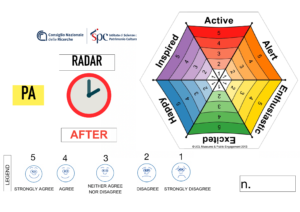
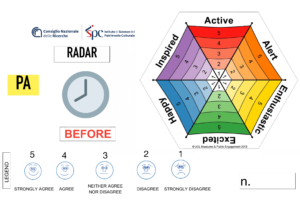
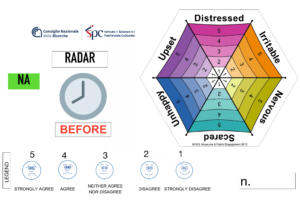

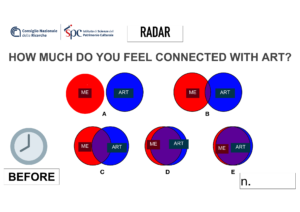
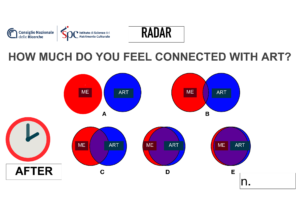
The tools in the RADAR toolkit are quick to compile and can be filled in directly by the cultural user, or alternatively, a facilitator can guide the person who took part in the experience in filling them out. The compilation allows the user to become aware of the changes that have emerged following the visit or the creative and cultural experience. The data can also be used by cultural operators or by educational and social-health professionals to obtain feedback on the impact of the experience.
Fourth newsletter issue
In this issue:
A preview on pilot actions
Field visit in Cluj-Napoca (Romania)
Interviews from Cluj
Last field visit in Budapest (Hungary)
A new Culture&Health project in the Marche region: ImproLANDS
READ HERE the fourth PerFare's newsletter issue
A new phase has started: the first two pilot actions promoting welfare and social inclusion through the arts
Flourishing from the capacity building programme, 8 are the artistic interventions that will take place in health and care venues in Hungary, Italy, Portugal, Romania and Sweden.
From May 2024 to May 2025, artists that have won the call to action will be working together with patients and healthcare professionals.
The first two to open the pilot action phase have been "Aqui Contigo - Sound as Last Lap" in Pombal (Portugal) and "Critical thinking & citizen's education for children and teenagers" in Cluj-Napoca (Romania).
Let's see them up close:
Aqui Contigo - Sound as Last Lap
Aqui Contigo is a project created by SAMP - Sociedade Artística Musical dos Pousos, a Public Utility Institution founded in 1873 which played an important role at regional, national and international level, whether due to the significant number of professional artists that have emerged from it or due to the innovation and quality of some of its programs and projects. Among all SAMP activity, its Artistic Education project dedicated to early childhood stands out, especially the strong social intervention of its programs developing within the scope of the therapeutic effects of the Arts.
In this sense, the project Aqui Contigo was born in 2015, being a program dedicated to people at the end of their lives and their families and caregivers. In a society that often abandons and forgets those who are dying, it is necessary to create contexts that enrich this precious and unique experience for the person and their closest circle of relationships. The Arts, as observed throughout human history, can play a vital role here, as the short history of this SAMP project demonstrates.
After years of experience, SAMP decided to present this type of project for the Municipality of Pombal, welfare partner of the PerFare partner Artemrede.
Intervention model
The Music Therapist intends, with family members and caregivers, to facilitate family support in the painful process and help in the grieving process.
During the last moments of life, in their homes or in institutions (hospitals, nursing homes or palliative care units), two music professionals work together with families to tell the sound story of each person in their terminal phase. This is done through the creation of a personal work that transfors an intimate and lonely moment into a moment of unity and communion, alleviating suffering in the final moments of their life and helping the person to free themselves spiritually.
Critical thinking & citizen's education for children and teenagers
Study visit in Budapest (HU): the last chapter of Perfare's capacity building programme
On 27th and 28th May 2024, the last PerFare's study visit took place in the city of Budapest, hosted by the partner Pro Progressione.
The programme was filled with candid moments of artists and socially-engaged professionals that shared their passionate work towards an inclusive and participative way to implement and promote culture and arts.
Three were the most relevant visits that the partners paid to:
- The project ArtRAVALÓ (“ART FOR TAKEAWAY”), a socio-art project of Subjective Values Foundation and Faktor Terminál Association that from September to May engage young adults (18-24 years) raised in state care in a complete programme aimed at fostering personal development, economic and financial skills, and all practical abilities that are needed to be break the barriers and become an active part of society. Theatre and performing arts are included in the programme as a catalist of motivation ad soft skills development: youths work on a theatre production and drama workshops together, including music and dancing.
„We believe that self-directed creative artistic activity, literature, poetry, music, acting and community experience all help us to understand ourselves and the world around us."
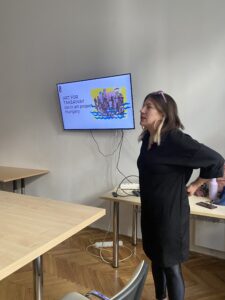
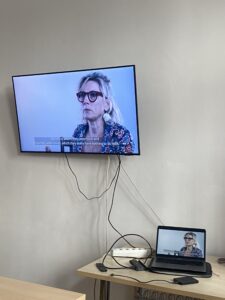
- EMMA Association, a national women’s organization which works for the fundamental rights and societal equality of women, paying special attention to gender-based oppression and violence against women during the childbearing and childrearing period. Specifically, their project MARA has a strong positive outcome: to empower Roma women and assist them through their maternity journey in hospitals, where they often end up in traumatic experiences of carelessness, verbal and physical violence, they trained members of the communities as Community DOULAs. After involving these figures, they noticed that Roma women started trusting giving birth again. Moreover, the community doulas can give support in contraception and abortion.
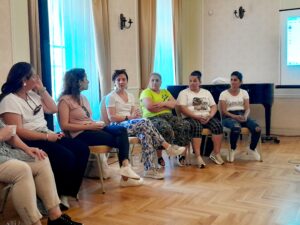
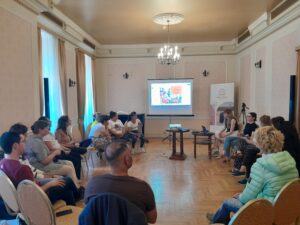
- The MáSzínház community, made up of children and adults with intellectual disabilities and atypical development, volunteer helpers and theatre professionals. In their work, the educational process that precedes the performance is as important as the performance itself.
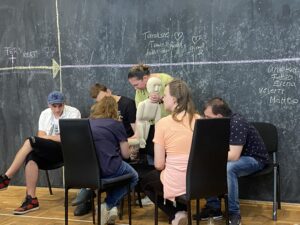
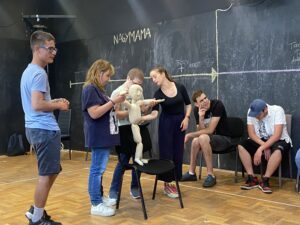
During the Networking Café, the partnership also got the chance to meet associations like:
- Móga Piroska, artistic leader of the project What’SAP - Exchange of Social Art Practices and Community Builders under construction
- Boros Eszter, project manager of Language Café
- Haragonics Sára, participatory movie maker for The Camera as a Social Catalyst
With this last study visit, Perfare's capacity building programme officially ends. Partners have treasured the programme from the very beginning and they are now working towards the implementation of the pilot actions.
More infos on the pilot actions are coming soon!
Keep following us on Facebook, Instagram and Vimeo.
Subscribe to our newsletter to receive all the updates on PERFARE and its journey directly on your emails.
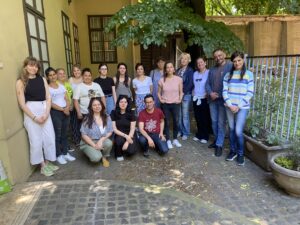
A visit to Romania's social engagement: how arts are employed for the welfare of marginalized groups
On 25th and 26th January 2024, the PerFare partnership participated in the fourth project field visit, hosted by AltArt Foundation in the beautiful city of Cluj-Napoca, unofficial capital of the Transylvania Region in Romania.
Behind the lively university life and rich history, persistently felt all around the city, lies a capillary cultural scene that is strongly focused on the social benefit of each and every people.
Roma people: a long forgotten community
In particular, rights for Roma people are often addressed. Associations like Social Fiber, Shoshin Theatre and AltArt itself have implemented or currently have ongoing projects aimed at the improvement of the severe discriminating conditions that Roma people face on a daily basis.
The CMA - Cluj Metropolitan Area, which comprises Cluj-Napoca and 19 nearby communes: Aiton, Apahida, Baciu, Bonţida, Borșa, Căianu, Chinteni, Ciurila, Cojocna, Feleacu, Floresti, Gilău, Gârbău, Jucu, Petresti de Jos, Săvădisla, Sânpaul, Tureni, Vultureni, has worked with the association Desegregare in the amazing Pata-Cluj project, followed by Pata 2.0, relocating Roma people from the Pata Rât area in new apartments in the city centre, with the aim to give back the right for a future back to the community.
From 2014, the Desegregare association has joined forces with other local stakeholders to fight for the rights of this millennial community, also engaging in cultural activities such as art and music for the Pata Rât children and teenagers, together with Social Fiber and AltArt Fundatia.
The theatre company REACTOR, born in 2014 and active in the social theatre field thanks to specific activities linked to issues among youngsters, also organized a theatre performance in Pata Rât, together with AltArt, in 2016.
Within all the actions activated in the area, the Khetane Festival is a worth mentioning best practice that brought - for the first time ever - around 700 people from the city into the Pata Rât community thanks to its incredible programme.
Practices for youths and elderly
The social vein of Cluj-Napoca is also visible when it comes to initiatives for youngsters and elderly people.
For instance, the FRCC - Romanian Foundation for Children, Community and Family is a day care institution located in the city centre, supported by UK funds and private funds, where teenagers in poverty and/or with psychological disorders can meet after school to be followed by a team of psychologists, educators, teachers and social animators. During their stay, which is determined according to one or more "interventions" lasting 6 months, guests are supported with school activities and engage in extracurricular activities, where arts such as painting, handwriting and music are explored (also in view of discovering each kid's vocation).
As for the elderly, DASM collaborates with the City Municipality and other associations to provide consistent care for elderly. It consists of 2 day care centers where they use art as a tool to improve aging conditions. Their guests paint, make music, sing, dance, organise shows and even participated in an Erasmus+ project where a group of 15 people travelled in Europe attending museums, in order to improve their skills in digitalisation.
DASM is also involved in a plan for building a cultural centre in Pata Rât that will provide sport and cultural activities, along with services like washing machines and psychological and social assistance.
The good practices existing in Cluj-Napoca are definitely too many to list in one go.
Explore the links to know more about each reality introduced.
And now, just enjoy some pictures from the study visit:
Also, keep following us on Facebook, Instagram and Vimeo.
Subscribe to our newsletter to receive all the updates on PERFARE and its journey directly on your emails.


